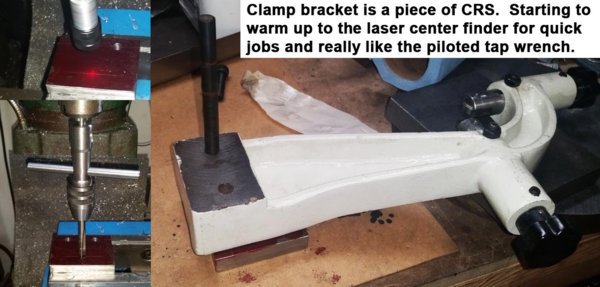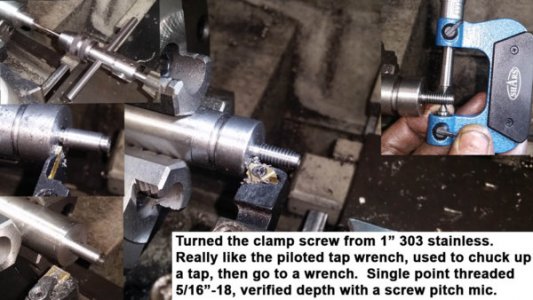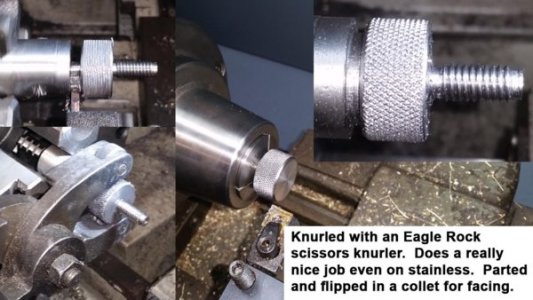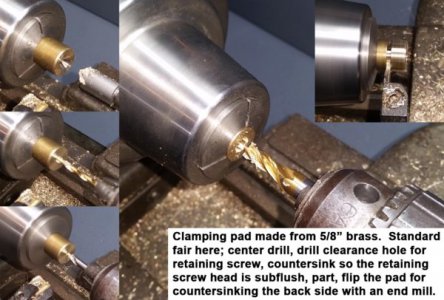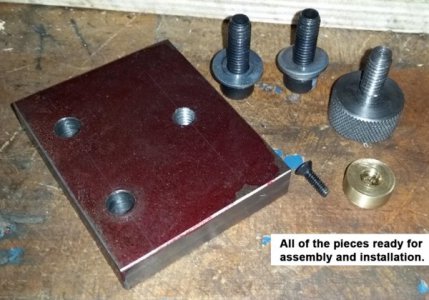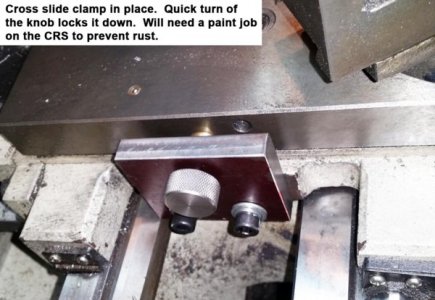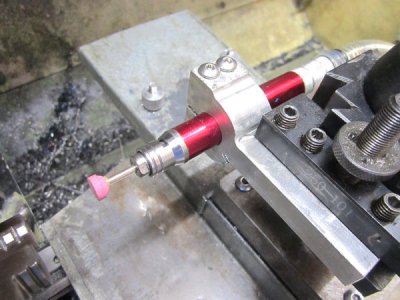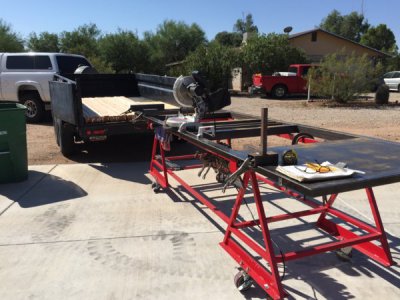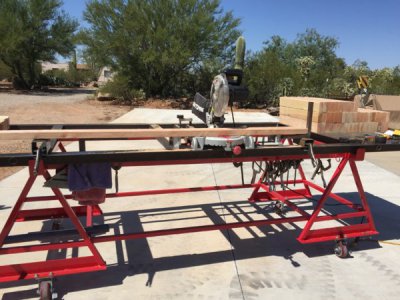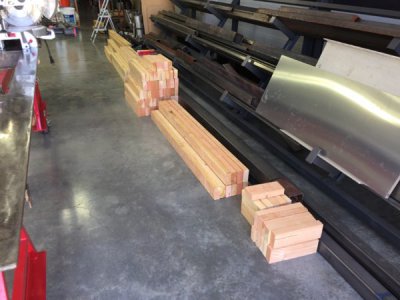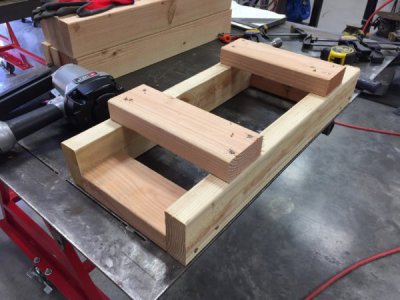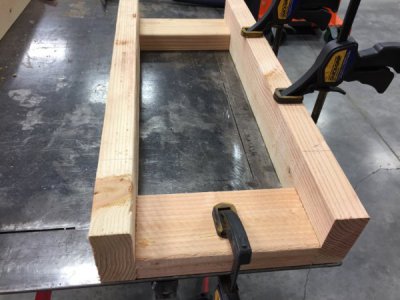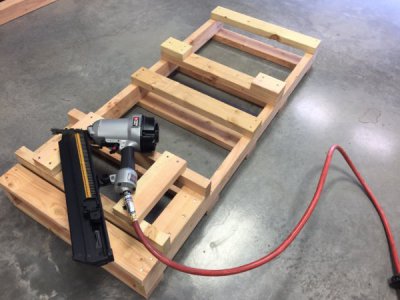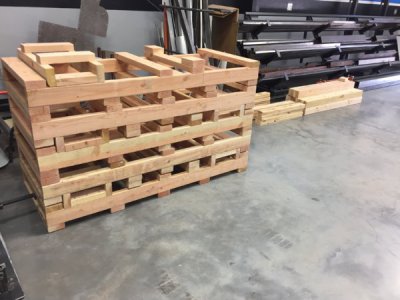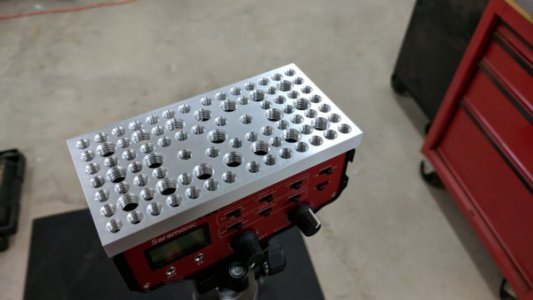POTD was making a cross slide lock for my Grizzly G0709 lathe. The lathe has a gib lock on the RH side, but my DRO scale obscures it, so my plan was to make a friction lock on the opposite side. Like others, used the follower rest existing holes in the saddle for the bracket mounting holes.
Cut a piece of ½” thick CRS to size, Dykem’d it up and transferred the follow rest mounting holes to the block. Then to the mill for drilling clearance holes and a tapped hole for a clamp screw. I picked up an SDA laser edge finder a couple of weeks ago and have been getting to like it more and more. For non-critical stuff, it quickly lets me find the center of a prick-punched hole. Wiggler works just as well, just my current personal preference. Also picked up a set of 0-1/4” and ¼”-1/2” piloted tap wrenches a while back. Really like using them as opposed to my old method of putting a tap in the drill chuck, turn the mill spindle by hand until the thread was at least 1 ½ diameter’s deep, then unchuck and use a conventional tap wrench.
Since the clamp was going on the LH side of the saddle, it’s going to get a lot of chips and coolant directly dumped on it. The clamp screw material of choice was 303 stainless. Turned a 1” round down to 5/16” for the screw. Drilled/tapped a 6-32 screw hole in the end for a brass clamping pad.
I could have run a die over the rod for threading, but chose to single point thread. I’ve single point threaded 100’s of times in the last 40 years and still go that route to keep up on the process. It wasn’t that long ago that I made a first pass with the compound at 45 deg. instead of 29.5 or 30. . .
I used a carbide inserted tool holder for the cutting, advanced the compound about 0.003” per pass. Started checking the thread with a screw pitch mic when the thread was getting close. Have to admit to running a die over top when it was done for a cursory check/clean up.
I’ve seen other make a slip-through clamp rod like a C-clamp for cranking down on the screw, but went with a knurled knob instead. I was concerned about the tommy bar sticking up and hitting the chuck, the knob is benign and not in the way. Eagle Rock scissors knurling tool with sharp knurls has NO problems with 303 stainless.
Brass clamping pad is 5/8” diameter stock. Nothing special here, was the material on hand. It was drilled and countersunk for a flat head cap screw into the stainless knob/screw. Flipped the brass after parting and countersunk a ¼” flat hole with a ¼” end mill.
It works well though the CRS block will need some treatment to prevent rust. Rattle can of gray Rustoleum primer should do the trick.
Bruce
